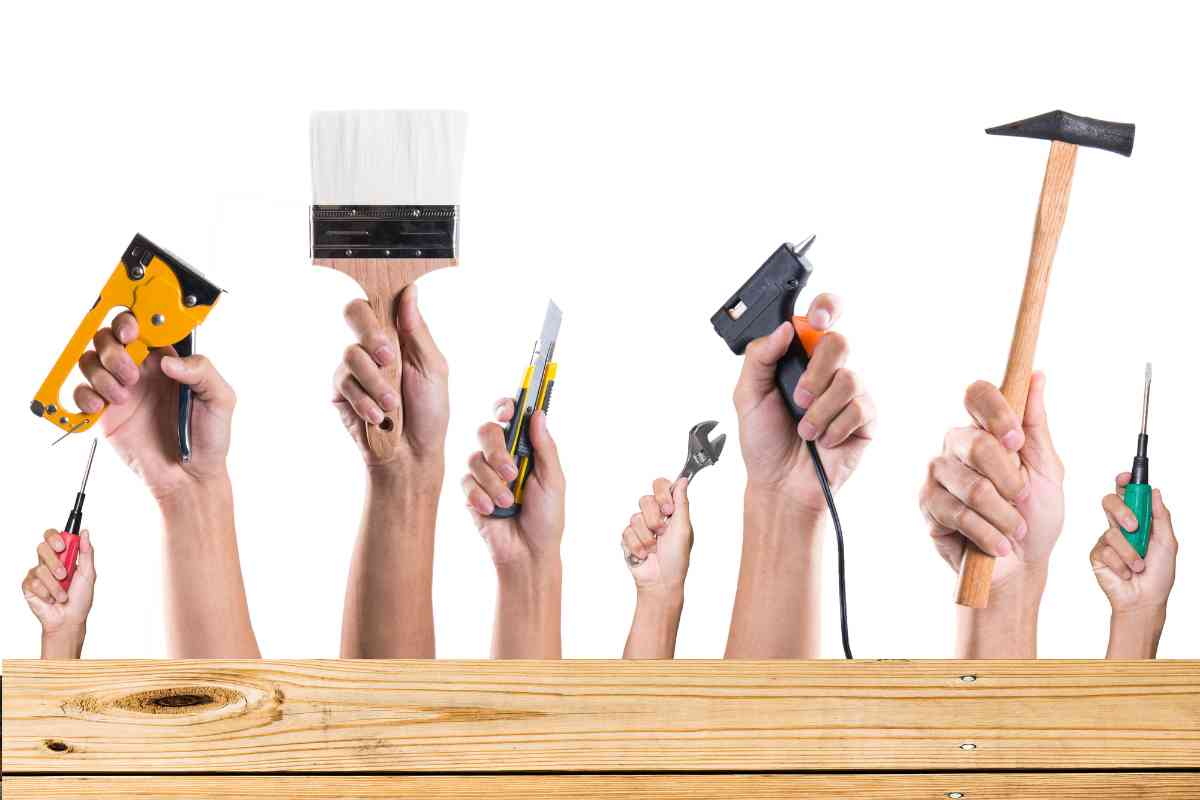Bass traps are highly effective at minimizing problematic low-end frequencies in a room. They can be used in a recording studio, home theatre, or commercial space like an office or restaurant.
You can make bass traps in several ways, depending on your budget and confidence in your DIY ability. You’ll need to use an absorbent material, like fabric, fiberglass, or acoustic foam, and create sturdy panels that can be mounted onto a wall or ceiling to absorb bass frequencies.
Even if you have limited DIY experience, you can create high-quality bass traps by following the instructions in our guide. You’ll need some essential equipment which we’ll cover shortly, and it should only take a few hours.
What is a Bass Trap?
Low-end frequencies can be problematic in a room. A build-up of bass occurs when the low frequencies move along walls and the ceiling, and they tend to be at their most prominent point where two hard surfaces meet.
For a room specifically designed for an audio-related purpose, these unwanted bass build-ups can negatively affect the overall sound. Recording studios, rehearsal spaces, gig venues, or any other commercial building can all be affected.
That’s where bass traps come in. Designed to absorb low-end frequencies, bass traps prevent the sound from moving freely around the room and intensify in the corners where two walls meet.
A bass trap is usually square or rectangular and consists of a hard material such as wood, which is covered in an absorbent material like fabric or foam. The softer material minimizes the reflections of the low-end sound frequencies.
Many bass traps are available, but they’re all designed to do the same thing. They take the sound waves, essentially air pressure, and slow their movement through friction when they encounter the absorbent material.

How to Make DIY Bass Traps
If you’ve already looked for bass traps to improve the sound of your room, you’ve probably noticed that they’re pretty expensive.
In many cases, it’s more cost-effective to make your own DIY bass traps. The process can also be a lot of fun, and you don’t need to be an experienced DIY expert to build them.
Firstly, before we get into the individual steps, here is the equipment that you’ll need to get started:
- Power Drill
- 8mm Drill bit
- Jigsaw, Circular Saw, or Table Saw
- Staple Gun
- OSB board (11mm)
- Furring timber (51mm x 51mm)
- Tape Measure
- Wool insulation (4 panels of 76mm thickness)
- Fabric
- Duct Tape or Glue
Step 1 – Safety Precautions
As you can see from the list of required equipment, you’ll be using some tools, such as a drill and saw, which need to be used properly and safely.
Before you start making your DIY bass trap, it’s essential to test your power tools to check that they’re working correctly and ensure you follow proper practice when using them.
Protective gloves are recommended when using a saw, and you should also use protective glasses to prevent any bits of wood or other material from entering your eyes.
Take your time with this project, and you can have a lot of fun while ensuring it is done safely.
Step 2: Planning Phase
Before embarking on any DIY project, it’s essential to do some prior planning. You need to answer the following questions, which will depend on your preferences and the room in which you want to install bass traps:
- How many bass traps do you want to put in the room?
- What is the right bass trap size to fit the room’s dimensions?
- Where will the bass traps be positioned in the room?
Answering these questions will require you to take measurements of the walls and figure out how big you can make the bass traps without negatively affecting the room’s aesthetics.
If you’re hoping to improve the sound of a large warehouse, you’re going to need more materials than if you’re acoustically treating your home recording studio.
For those who are unsure how many bass traps to use, it’s a good idea to start by making enough to cover the corners where the walls meet the floor and the ceiling, as these are the most problematic areas.
Step 3 – Build the Frame
Once you’ve decided on the size of your bass traps, you need to assemble the frame using furring timber. Measure each length of wood, then clearly mark where you need to cut it.
After you’ve cut the four pieces, you need to attach them to create a rectangular or square frame, depending on your preferences.
Using your drill, attach each piece of wood with screws. Once the frame is attached, check that it is secured before you move on to the next step.
If you don’t have a drill, you can also attach the lengths of wood using strong wood-glue or nails. Screws are the easiest and quickest method, though.
Step 4 – Attach the Back Panel
Next, you’ll need to cut your OBS panel to match the size of your wooden frame. You’ll need to place it on a flat surface and clamp it in place while cutting it with the saw.
The OBS panel should be the exact size of the frame’s outer diameter so that it can be secured using screws or wood glue.
Once it is cut to shape, place it flat on the frame and put a screw on each side to hold it. Add a few screws on all the sides to ensure that it is held in place securely.

Step 5 – Add the Insulation
Now it’s time to add the insulation material to the frame. If you’ve chosen wool, you can pack it into the frame and then use strips of duct tape to keep it in place.
If you’re using a board of insulation material, you can cut it to size using your saw and position it inside the frame. Again, duct tape can be used to hold it in place, or you could use a layer of glue.
Whatever type of insulation you use, make sure it’s tightly compacted in the frame with none protruding out over the edge.
Step 6 – Wrapping the Panel with Fabric
At this point, your bass trap should be coming together nicely. You’ve built the sturdy frame, added the rear OBS panel, and packed it with absorbent material.
Next, you need to cover the entire panel with fabric. There are several ways you could do this, but the easiest is to stretch out a sheet of fabric that is longer than required to cover the entirety of your bass trap.
The back of the panel should be where the ends meet so that the front looks tidy when it is placed on the wall.
Then, place the bass trap in the center of the fabric, and pull the material over the wooden frame. Using your staple gun, secure the fabric to the wood.
Repeat this process at each side of the frame, ensuring that you pull the fabric tight enough to remove any folds or creases. Staple it at each side to ensure it won’t pull out due to the tension.
Step 7 – Mounting Your Bass Traps
You’ve created a DIY bass trap, and it’s time to mount it in the room. This should be relatively straightforward if you’ve done the planning, as you already know where it will be located.
Heavy-duty shelf brackets are the best choice for mounting bass traps to a wall. They’re designed to bear heavy weight and will ensure that the panels don’t fall unexpectedly.
You may need to use a step ladder if you’re placing bass traps in the upper corners of a room, and it’s a good idea to have someone there to pass the panels up to you.
Testing Your DIY Bass Traps
Once the bass traps are in position, you can assess their effectiveness by playing bass-heavy music in the space and listening to how it sounds.
Make sure you move around the room to get an accurate idea of how the bass traps impact the overall acoustics.
If you’re still hearing a lot of boomy low-end frequencies, you may need to add another bass trap to the walls.
Related Questions
Should bass traps always go in corners?
The corners of a room, where two walls meet, are the most common areas for bass frequencies to build up. Therefore, it’s recommended that bass traps are placed in the corners to be most effective, but they can also be placed in other locations.
Can you use too many bass traps?
Using a large number of bass traps won’t negatively affect the sound of a room. It will simply prevent frequencies from becoming too intense, which is a good thing in most cases.
Should bass traps touch the floor?
Bass traps don’t necessarily need to touch the floor to be effective. Some people choose to have bass traps going from the ceiling to the floor, which will cause maximum absorption of low-end frequencies.
